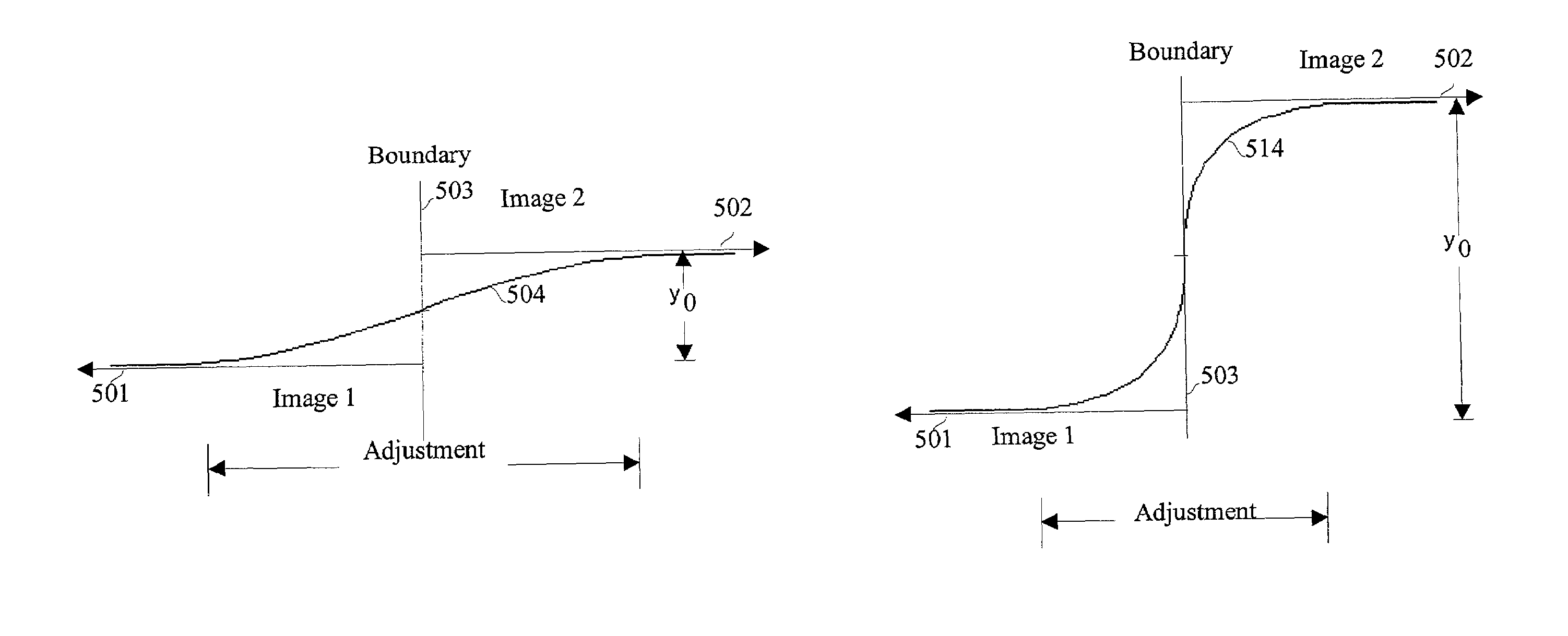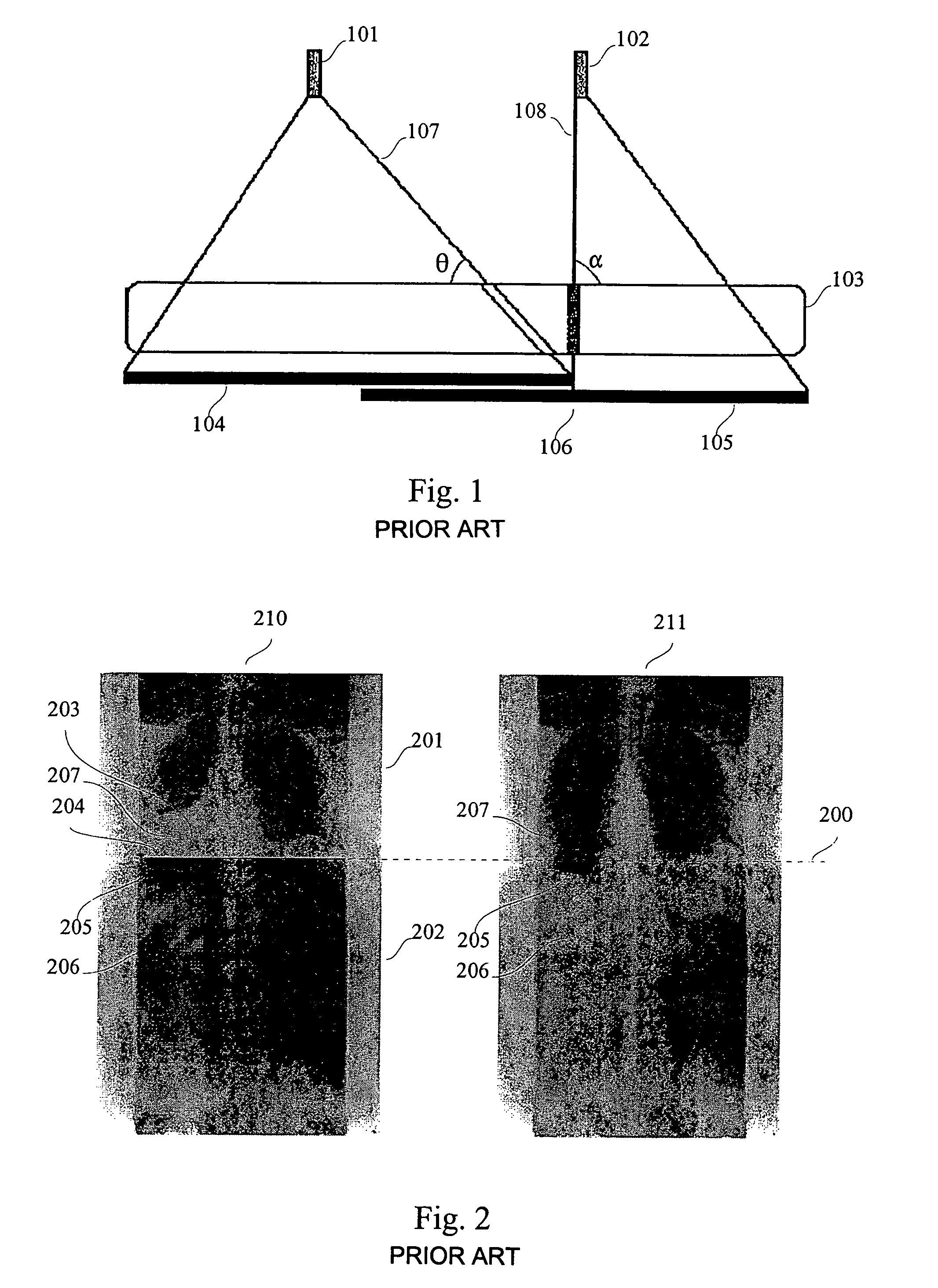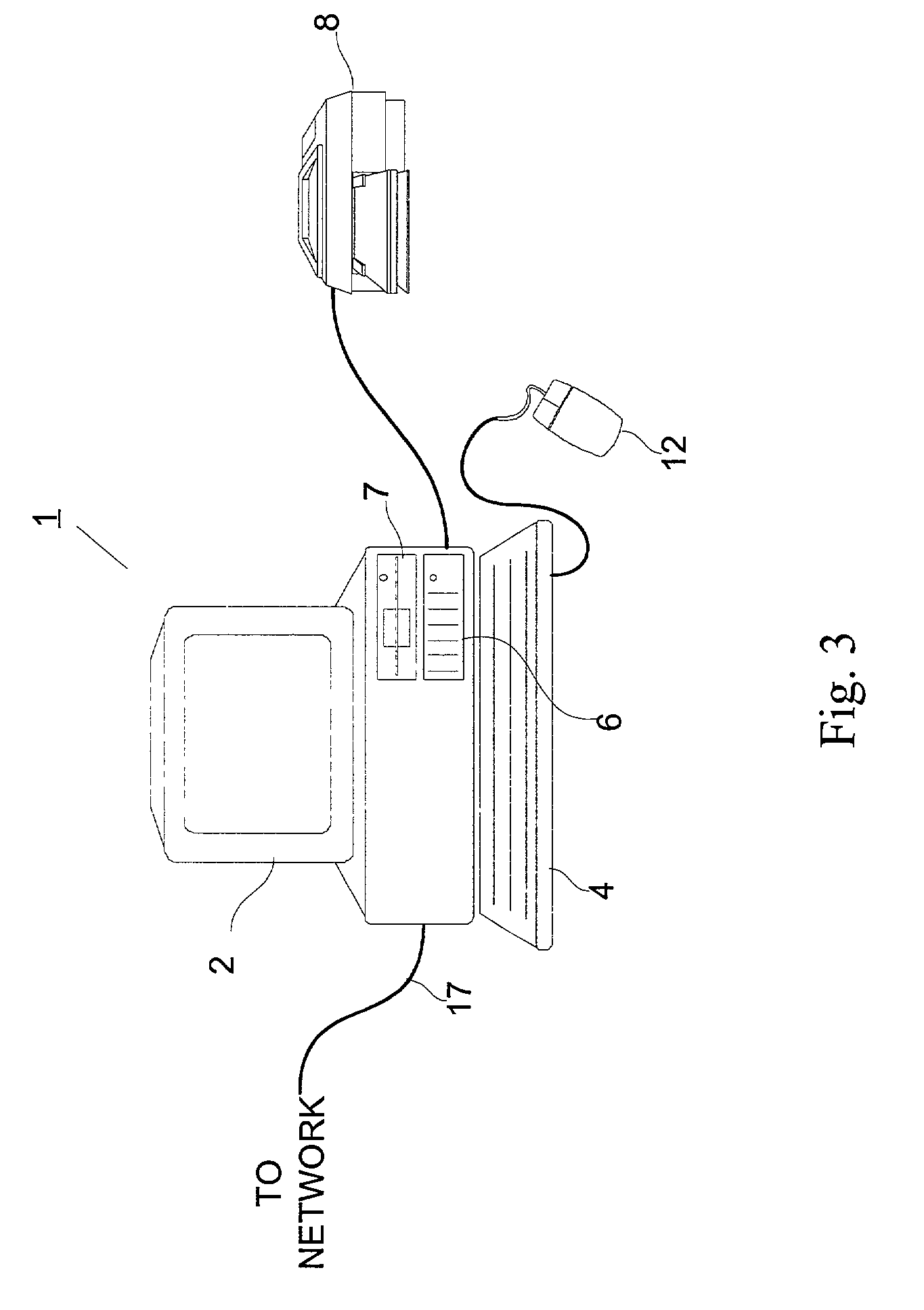Radiographic image composition and use
a radiographic image and composite technology, applied in image enhancement, image analysis, instruments, etc., can solve the problems of more acute, unusable overlap area, creation of artifacts, etc., and achieve the effect of eliminating any visible overlap area
- Summary
- Abstract
- Description
- Claims
- Application Information
AI Technical Summary
Benefits of technology
Problems solved by technology
Method used
Image
Examples
Embodiment Construction
[0034]FIG. 3 is an outward view of representative computing hardware embodying the present invention. It should be apparent that the present invention is not limited to use with the computing hardware shown in FIG. 3, and that other computing hardware configurations may be used with the present invention.
[0035]Shown in FIG. 3 are computer 1 executing an operating system, such as Microsoft Windows98®, display monitor 2 for displaying text and images to a user, keyboard 4 for entering text and commands into computer 1, and mouse 5 for manipulating and for selecting objects displayed on display monitor 2. Also included with computer 1 are fixed disk drive 6, in which are stored application programs, such as digital image processing, word processing, graphics, and other applications as well as data files, and device drivers for controlling peripheral devices attached to computer 1, floppy disk drive 7 for use in reading data from and writing data to floppy disks inserted therein. Data a...
PUM
 Login to View More
Login to View More Abstract
Description
Claims
Application Information
 Login to View More
Login to View More - R&D
- Intellectual Property
- Life Sciences
- Materials
- Tech Scout
- Unparalleled Data Quality
- Higher Quality Content
- 60% Fewer Hallucinations
Browse by: Latest US Patents, China's latest patents, Technical Efficacy Thesaurus, Application Domain, Technology Topic, Popular Technical Reports.
© 2025 PatSnap. All rights reserved.Legal|Privacy policy|Modern Slavery Act Transparency Statement|Sitemap|About US| Contact US: help@patsnap.com



